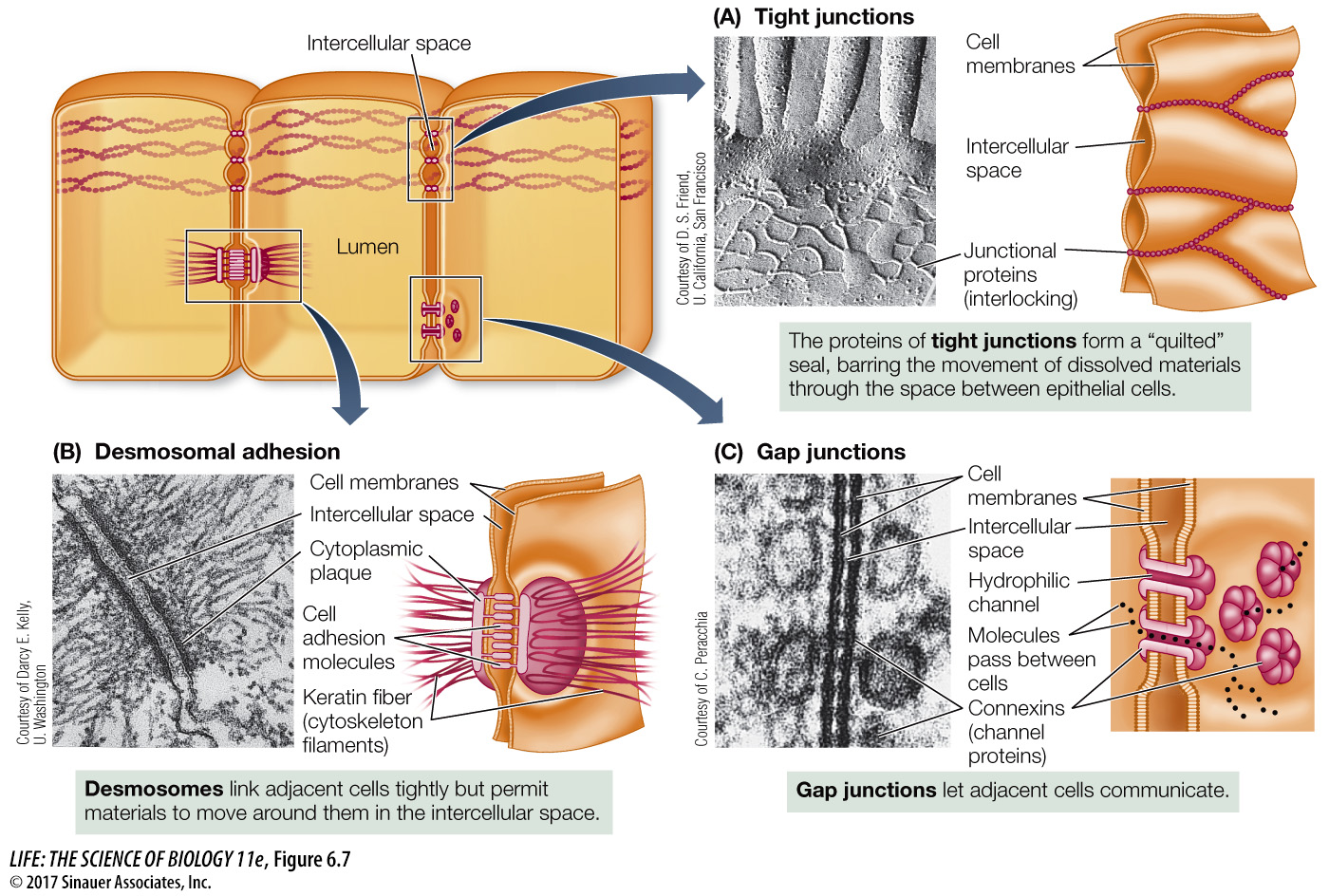Three types of cell junctions connect adjacent cells
In a complex multicellular organism, cell recognition molecules allow specific types of cells to bind to one another. Often, after the initial binding, both cells contribute material to form additional membrane structures that connect them to one another. These specialized structures, called cell junctions, are most evident in electron micrographs of epithelial tissues, which are layers of cells that line body cavities or cover body surfaces. These surfaces often receive stresses or must retain their contents under pressure, so it is particularly important that their cells adhere tightly. We will examine three types of cell junctions that enable animal cells to seal intercellular spaces, reinforce attachments to one another, and communicate with each other. Tight junctions, desmosomes, and gap junctions, respectively, perform these three functions (Figure 6.7).

Activity 6.3 Animal Cell Junctions
www.life11e.com/
Tight junctions prevent substances from moving through the spaces between cells. For example, cells lining the bladder have tight junctions so urine cannot leak out into the body cavity. Another important function of tight junctions is to maintain distinct faces of a cell within a tissue by restricting the migration of membrane proteins over the cell surface from one face to the other. This may result in a certain function (e.g., endocytosis) being confined to one region of the cell surface.
Desmosomes hold neighboring cells firmly together, acting like spot welds or rivets. Materials can still move around in the extracellular matrix. This provides mechanical stability for tissues such as skin that receive physical stress.
Gap junctions are channels that run between membrane pores in adjacent cells, allowing substances to pass between cells. In the heart, for example, gap junctions allow the rapid spread of electric current (mediated by ions) so the heart muscle cells beat in unison.